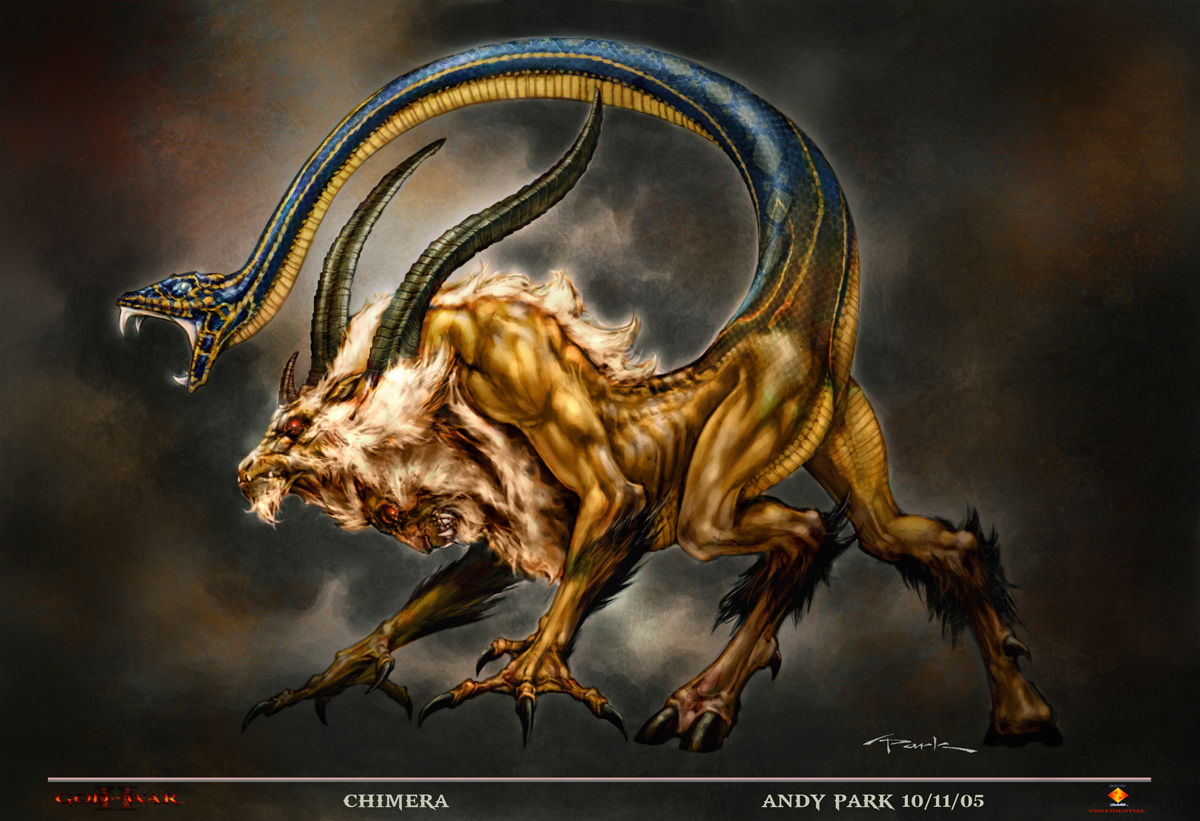We apologize for yesterday's entry. The mere topic of dragons is usually enough to send the authoress into a fit of blind rage. We know we offended people, but this apology is more about the relative incompleteness of the article in question. Truly, it is a monstrous chimera of the authoress's rage and actual research.
Oh, and speaking of chimeras? Those are real.

Science has not yet created a lion-goat-snake hybrid as described in Greek mythology. The term, however, has stuck. "Chimera" can be used to describe any creature with the genetic material of two different organisms in the same body. That said, we agree with science here and will be using the term loosely to describe any composite beast.
Chimeras are not hybrids. A hybrid is a homogeneous blend of two organisms' genes, i.e. every single cell of a hybrid has the DNA of two different organisms. Chimeras do not have every single cell fused like that; instead, some cells belong to one organism, and some to another. The result is a noticeably mismatched animal, such as the geep.
All chimerae, including the geep, are made at the embryonic level. The most common natural chimeras are formed by two sperm reaching, penetrating, and fertilizing the same egg (called "tetrogametic chimerism" for you science-y types). Instead of the joint effort forming nonidentical twins, the two form one organism with different DNA in different parts of its body. The results of this can be funky; for example, when it comes to parental DNA testing, or in some cases of hermaphroditism in which both sets of genitalia are present. There is another "chimera" in the anglerfish, but we will cover that when that fish gets its day. Plants have their own natural chimerae as well.
Chimerae like the geep are important to developmental studies. Geep, for example, are recognized as both sheep and goats by an animal's immune system; they can gestate properly in either species. This could come in handy for reviving endangered species with just enough modern DNA. A "remixed" mammoth is in the near future if this research keeps up.
People tend to draw a strange line when it comes to playing with human embryos. Science, however, cannot resist playing around with them just a little bit. Splicers in China created the first chimeric embryo out of human skin cells and dead rabbit eggs in 2003. Numerous attempts have been made to put human DNA into cow eggs. Congrats, science: You are inches away from creating a minotaur.
Oh, and speaking of chimeras? Those are real.

Science has not yet created a lion-goat-snake hybrid as described in Greek mythology. The term, however, has stuck. "Chimera" can be used to describe any creature with the genetic material of two different organisms in the same body. That said, we agree with science here and will be using the term loosely to describe any composite beast.
Chimeras are not hybrids. A hybrid is a homogeneous blend of two organisms' genes, i.e. every single cell of a hybrid has the DNA of two different organisms. Chimeras do not have every single cell fused like that; instead, some cells belong to one organism, and some to another. The result is a noticeably mismatched animal, such as the geep.
 |
| Note the wooly parts separated from the hairy parts. |
All chimerae, including the geep, are made at the embryonic level. The most common natural chimeras are formed by two sperm reaching, penetrating, and fertilizing the same egg (called "tetrogametic chimerism" for you science-y types). Instead of the joint effort forming nonidentical twins, the two form one organism with different DNA in different parts of its body. The results of this can be funky; for example, when it comes to parental DNA testing, or in some cases of hermaphroditism in which both sets of genitalia are present. There is another "chimera" in the anglerfish, but we will cover that when that fish gets its day. Plants have their own natural chimerae as well.
Chimerae like the geep are important to developmental studies. Geep, for example, are recognized as both sheep and goats by an animal's immune system; they can gestate properly in either species. This could come in handy for reviving endangered species with just enough modern DNA. A "remixed" mammoth is in the near future if this research keeps up.
People tend to draw a strange line when it comes to playing with human embryos. Science, however, cannot resist playing around with them just a little bit. Splicers in China created the first chimeric embryo out of human skin cells and dead rabbit eggs in 2003. Numerous attempts have been made to put human DNA into cow eggs. Congrats, science: You are inches away from creating a minotaur.
 |
| Took ya long enough! |

No comments:
Post a Comment